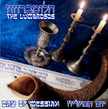For he himself (Messiah) is our peace, who has made us both one and has broken down in his flesh the dividing wall of hostility.
Everything about the Tabernacle was designed to mirror immortality. It is the reason why offerings were salted and why honey and leaven were forbidden on the altar. Resinous shittim wood also like cedar is resistant to corruption. On the third after the offering meat turns rancid, so after two days (on the third day) any meat from peace offerings was to be burnt. Anyone who partook of the meat of a peace offering on the third invalidated the offering and was regarded as cut off (Leviticus 7:16-21).
This brings us into the ‘third day’ reoccurring theme of the Scriptures. Rather than seeing corruption, on the third day meat from a peace offering put on incorruptibility through being burnt. The fire of the altar, a fire which originated from heaven, lifts the offering back to heaven in the form of smoke (Leviticus 9:23-24). In the story of Samson, we see an example of the ‘Angel of the Lord’, (who is really Messiah) rising back to Heaven through the smoke of a burnt offering called in Hebrew the ‘olah’ or the ‘ascent’ (Judges 13:20).
The peace offering is the only one in which the offerer partakes. It is symbolic of communion and fellowship with God through a meal. Hospitality was a big thing in the East and to invite someone to eat showed great acceptance. In the same way eating with God shows He accepts us. Moses and seventy-three other people ate with God on the mountain and the whole congregation of Messiah’s people will eat with Him at the Marriage Supper of the Lamb (Exodus 24:11; Revelations 19:9).
The Passover Lamb being a shadow of Messiah is a peace offering as people partake of it. Paul often used the imagery of the peace offering to describe Messiah’s role in our lives (1 Corinthians 10:18; Romans 5:1; Ephesians 2:14; Colossians 1:20). In the same way, His body was not allowed to see corruption (Psalms 16:10; 49:9) but as a proper peace offering, He rose from the tomb on the third day.
Hoseah prophecied on the resurrection of Israel’s great Diaspora (exile) in the following words: "Come, let us return to the LORD; for he has torn us, that he may heal us; he has struck us down, and he will bind us up. After two days he will revive us; on the third day he will raise us up, that we may live before him (Hoseah 6:1-2). Seeing as with the Lord one day is as a thousand years, and a thousand years as one day (2 Peter 3:8), the prophet prophesied of the resurrection of Israel on the third millennium of the present exile, third millennium in which we are also witnessing the resurrection of the Jewish state which contains a strong Messianic first fruit element of believers which brings it incorruptibility.
In this day, in our day, the peace offering is finally being consumed. At the time appointed, at the sound of the great shofar of the Last Day, it will rise to Him in immortality and find fellowship with God. All those who partake of Messiah’s offering of peace are part of this everlasting promise.
 RSS Feed
RSS Feed


